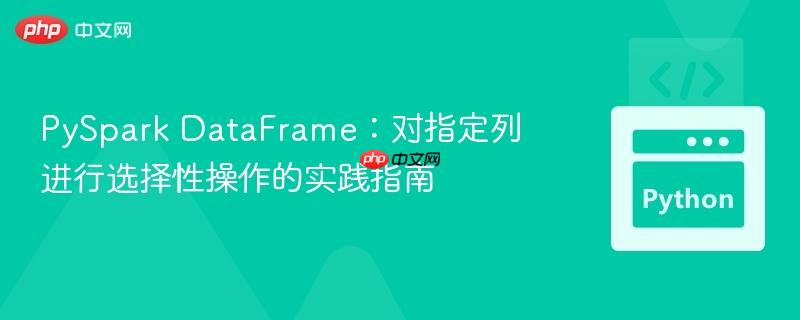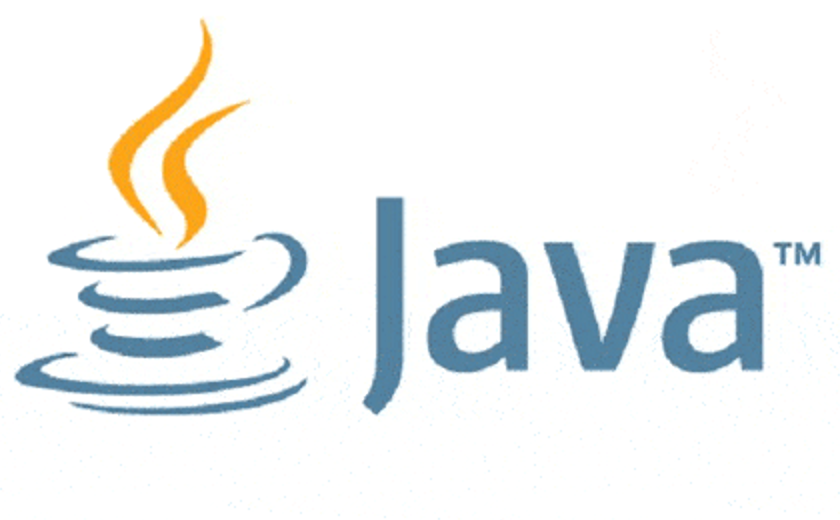
本教程旨在解决pyspark dataframe中对特定列执行操作(如四舍五入)同时保留其他列不变的常见问题。文章将详细阐述直接应用操作可能导致的错误,并提供一种高效、灵活的解决方案,通过选择性地构建列表达式来确保数据完整性和输出的准确性。
在数据处理过程中,我们经常需要对PySpark DataFrame中的部分列执行特定的转换操作,例如对数值列进行四舍五入、类型转换或聚合计算,而其他列则需要保持原样。然而,如果不正确地处理,这可能会导致非预期结果,例如非数值列被转换为NULL,或者不希望被操作的列被意外删除。本指南将详细介绍如何优雅且高效地实现这一目标。
from pyspark.sql import SparkSession
from pyspark.sql.functions import round, col
<h1>初始化SparkSession</h1><p>spark = SparkSession.builder.appName("SelectiveColumnOperations").getOrCreate()</p><h1>创建示例DataFrame</h1><p>data = [
("min", 0.001, 0.123, 0.234, 0.345),
("max", 1.001, 1.123, 1.234, 1.345),
("stddev", 2.001, 2.123, 2.234, 2.345)
]
columns = ["Summary", "col 1", "col 2", "col 3", "col 4"]
df = spark.createDataFrame(data, columns)</p><p>print("原始DataFrame:")
df.show()
原始DataFrame: +-------+-----+-----+-----+-----+ |Summary|col 1|col 2|col 3|col 4| +-------+-----+-----+-----+-----+ | min|0.001|0.123|0.234|0.345| | max|1.001|1.123|1.234|1.345| | stddev|2.001|2.123|2.234|2.345| +-------+-----+-----+-----+-----+
df2_all_cols_rounded = df.select(*[round(col(column), 2).alias(column) for column in df.columns])
<p>print("对所有列应用round函数的结果:")
df2_all_cols_rounded.show()
对所有列应用round函数的结果: +---------+-------+-------+-------+-------+ | Summary| col 1| col 2| col 3| col 4| +---------+-------+-------+-------+-------+ | NULL| 0.00| 0.12| 0.23| 0.35| | NULL| 1.00| 1.12| 1.23| 1.35| | NULL| 2.00| 2.12| 2.23| 2.35| +---------+-------+-------+-------+-------+
df3_sliced_cols = df.select(*[round(col(column), 2).alias(column) for column in df.columns[1:]])
<p>print("直接切片选择并操作列的结果:")
df3_sliced_cols.show()
直接切片选择并操作列的结果: +-------+-------+-------+-------+ | col 1| col 2| col 3| col 4| +-------+-------+-------+-------+ | 0.00| 0.12| 0.23| 0.35| | 1.00| 1.12| 1.23| 1.35| | 2.00| 2.12| 2.23| 2.35| +-------+-------+-------+-------+
以下是实现预期结果的代码:
# 确定需要进行四舍五入的列(除了第一列)
columns_to_round = df.columns[1:]
<h1>构建selectExpr的表达式列表</h1><h1>对于Summary列,直接选择</h1><h1>对于其他列,应用round函数并保留原列名</h1><p>select_expressions = ["Summary"] + [f"round({column}, 2) as {column}" for column in columns_to_round]</p><h1>应用selectExpr</h1><p>df_rounded_specific = df.selectExpr(*select_expressions)</p><p>print("使用selectExpr选择性操作列的结果:")
df_rounded_specific.show()</p><h1>停止SparkSession</h1><p>spark.stop()
使用selectExpr选择性操作列的结果: +-------+-----+-----+-----+-----+ |Summary|col 1|col 2|col 3|col 4| +-------+-----+-----+-----+-----+ | min| 0.00| 0.12| 0.23| 0.35| | max| 1.00| 1.12| 1.23| 1.35| | stddev| 2.00| 2.12| 2.23| 2.35| +-------+-----+-----+-----+-----+
以上就是PySpark DataFrame:对指定列进行选择性操作的实践指南的详细内容,更多请关注php中文网其它相关文章!

每个人都需要一台速度更快、更稳定的 PC。随着时间的推移,垃圾文件、旧注册表数据和不必要的后台进程会占用资源并降低性能。幸运的是,许多工具可以让 Windows 保持平稳运行。




Copyright 2014-2025 https://www.php.cn/ All Rights Reserved | php.cn | 湘ICP备2023035733号